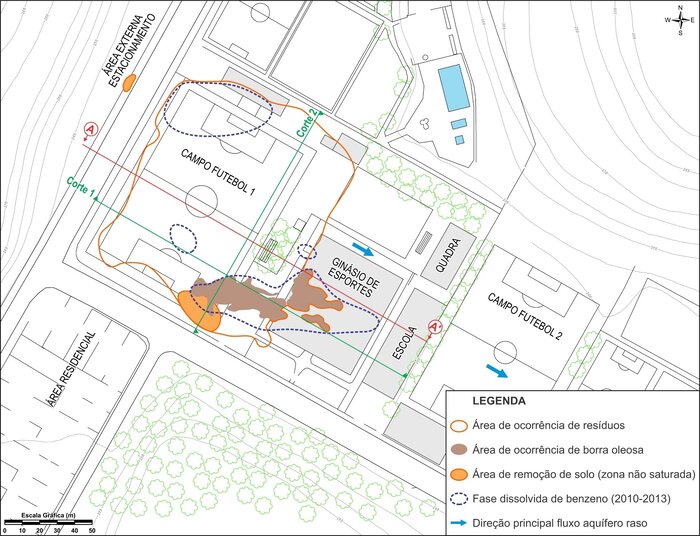The environmental management of an area used for industrial wastes disposal for 30 years, which was rehabilitated for the intended use, such as a sports center, through the implementation of institutional control measures, without the implementation of remediation actions in the main secondary sources of contamination.
The studies comprised of:

The environmental investigations detailing over time has provided subsidies for decision making involving all stakeholders: the company, the environmental agency, the public ministry and the surrounding community.
The actions implemented were mainly based on the adoption of institutional control and monitoring measures, resulting in an assertive and sustainable direction to the case.
The environmental management of liabilities provided environmental and economic gains through the adoption of a sustainable remediation concept, whose conceptual environmental model was corroborated by historical monitoring campaigns conducted on a periodic basis, which demonstrated the stability of the contaminant concentrations in the aquifer, at levels that do not represent potential risks to local receptors, allowing the rehabilitation of the contaminated area for the intended use as a sports center.